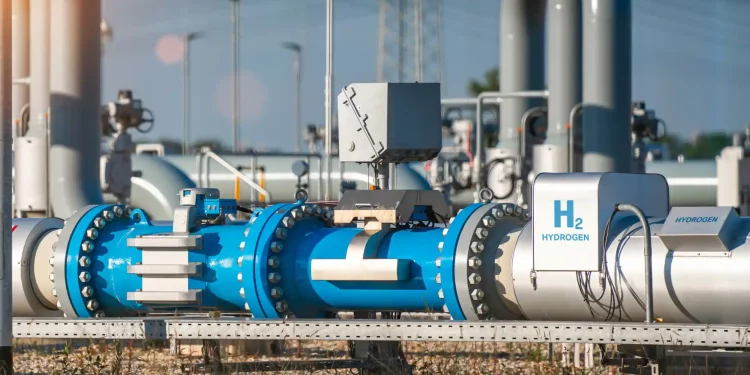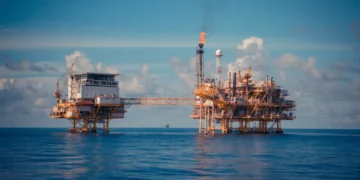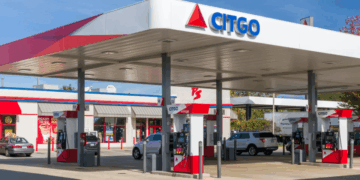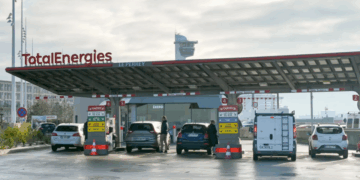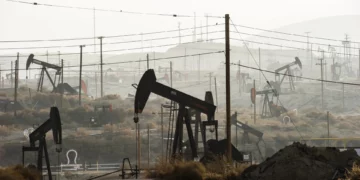FDE has applied for a permit to conduct in-depth mining exploration called the Trois-Eveches Permit, for exploring the mining base in Lorraine for more natural hydrogen
Professor Jacques Pironon discovered something so valuable that it could quench the thirst for an alternative to fossil fuels.
The professor’s team was searching for methane in the Lorraine Basin in northeastern France when his team found something that they didn’t have the slightest expectation of.
A couple of years back, such a discovery would be used just in university, but in this age, it’s a matter of climate preservation and billions of dollars. Today, it’s a matter of great interest as well because it can help us achieve the global net-zero emissions target.
In May this year, La Française d’Énergie (FDE) unearthed a huge deposit of natural hydrogen, especially dihydrogen (H2), while checking for risks of firedamp pockets or methane accumulations. Their reports show that they have found a 15% concentration at 1,093m and 98% at depths of 3,000m.
It is believed that the Lorraine basin could have a reserve of over 46 million tonnes of natural hydrogen. This figure amounts to 50% of the present global hydrogen production. It could substantially boost the EU’s efforts to achieve its sustainability targets.
FDE has thus applied for a permit to conduct in-depth mining exploration to be called Trois-Eveches Permit, for exploring the mining base in Lorraine for more natural H2.
The Lorraine discovery is not the first time that researchers have struck natural hydrogen. As of now, it is being pumped from a small well in Bourakebougou, western Mali. There are expectations of large reserves in the United States, Australia, Russia, and some other European nations as well.
The FDE discovery is perceived to be the largest reserve of hydrogen deposits in nature that has ever been found. Professor Pironon expects reserves of up to 250 million tonnes of hydrogen estimated to fulfill the current global demand for the next two years.
Geoffrey Ellis, a research geologist at the US Geological Survey (USGS), said that there is a possibility of hydrogen reserves in different corners of the world, but not all are available for outright exploration. He says that most of the reserves worldwide are unreachable, be it too deep or too far offshore and in such smaller accumulations that it is economically not feasible.
As per USGS estimates, upwards of 100,000 megatonnes of feasible hydrogen is expected to be feasible, enough for a few hundred worth of supply. The technology to harness these receivers is similar to that of natural gas, which is readily available.
Natural H2 is trapped in the crust and mantle of our planet. It can be found in ocean ridges, mountains with ophiolites, the remains of ancient oceanic rocks, and iron-rich rocks.
Present Scenario
The Bourakebougou facility in Mali is a single site pumping out white hydrogen on a commercial basis. It is only producing about five tonnes per annum, with several areas under inspection for future exploration.
In July 2023, a Denver-based startup, Koloma, received $91m from Bill Gates’s investment firm Breakthrough Energy Ventures. They will be searching for hydrogen reserves located in the States.
The Australian government, in 2021, added hydrogen to their list of regulated substances permitted for exploration under the Petroleum and Geothermal Act of 2000. This has removed obstacles to possible exploration, especially in South Australia.
Suren Thurairajah, partner of climate and sustainability at Deloitte Australia, says that since the start of 2021, six different firms have applied and received licenses for 18 explorations for gold hydrogen.
A company named Gold Hydrogen has declared that they have struck a large reserve of natural hydrogen that can be exploited from the next year onwards.
The global energy giants are interested but are waiting and closely observing the exploration developments. They are leaving the initial risk-taking tasks for the early startups. Another problem is that there is no mature market for hydrogen; it is fragmented all over the world.
Once there is ample production data available from these wells, then we can see the major oil companies getting involved in this industry.
According to Ellis from USGS, there is a chicken and egg problem: the market is not creating because of no supply, and supply is not being developed because of a lack of market demand. He believes it is a matter of effort that the companies need to decide how quickly they want it.
As per the Hydrogen Council, an industry group, Europe is the global leader with a 35% share in investments in hydrogen project proposals, followed by North America and Latin America with 15% of investments each.


